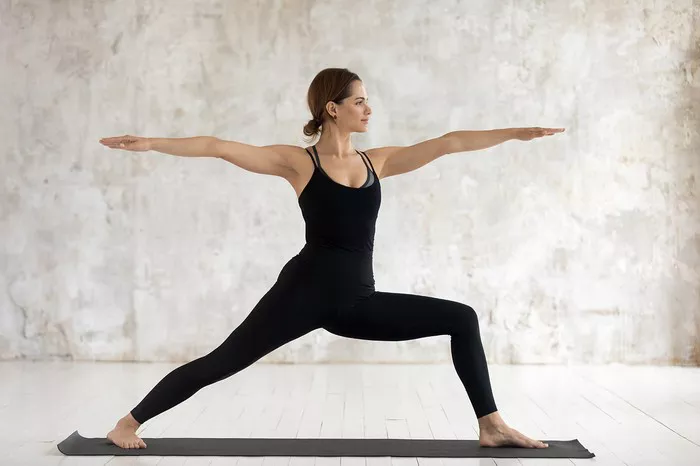Nirvana Yoga and Meditation is an integrative approach to well-being that combines ancient practices of yoga and meditation to achieve a state of inner peace and enlightenment. Rooted in centuries-old traditions yet adaptable to modern lifestyles, Nirvana Yoga and Meditation offers a comprehensive pathway to physical, mental, and spiritual health. This article explores the origins, principles, benefits, and practical aspects of Nirvana Yoga and Meditation, providing everything you need to know to embark on this transformative journey.
Origins and Philosophy
Historical Background
Nirvana Yoga and Meditation traces its roots to ancient India, where the concepts of yoga and meditation first emerged as part of the spiritual traditions of Hinduism, Buddhism, and Jainism. The term “nirvana” is often associated with Buddhism, signifying the ultimate state of liberation and freedom from the cycle of birth and rebirth (samsara). In the context of Nirvana Yoga and Meditation, nirvana represents the attainment of ultimate peace and enlightenment through dedicated practice.
Core Principles
The philosophy of Nirvana Yoga and Meditation is grounded in the belief that true well-being arises from the harmonious integration of body, mind, and spirit. Its core principles include:
- Holistic Health: Emphasizing the interconnectedness of physical, mental, and spiritual health.
- Mindfulness: Cultivating present-moment awareness in all aspects of life.
- Balance: Striving for equilibrium in daily activities and internal states.
- Self-Realization: Encouraging personal growth and the realization of one’s true nature.
- Compassion: Fostering a compassionate attitude towards oneself and others.
The Practice of Nirvana Yoga
Asanas (Postures)
Asanas, or physical postures, form the foundation of Nirvana Yoga. These postures are designed to enhance flexibility, strength, and balance while promoting internal awareness and relaxation. Key asanas in Nirvana Yoga include:
- Tadasana (Mountain Pose): A grounding posture that improves posture and balance.
- Adho Mukha Svanasana (Downward-Facing Dog): A rejuvenating pose that stretches the entire body.
- Virabhadrasana (Warrior Pose): A series of standing postures that build strength and stability.
- Balasana (Child’s Pose): A restorative pose that promotes relaxation and introspection.
- Savasana (Corpse Pose): A final relaxation pose that allows for complete surrender and integration of the practice.
Pranayama (Breath Control)
Pranayama, the practice of breath control, is integral to Nirvana Yoga. It involves various techniques to regulate and harness the breath, enhancing vitality and mental clarity. Common pranayama techniques include:
- Ujjayi (Victorious Breath): A calming breath that enhances focus and concentration.
- Nadi Shodhana (Alternate Nostril Breathing): A balancing breath that harmonizes the left and right hemispheres of the brain.
- Kapalabhati (Skull-Shining Breath): A cleansing breath that energizes and detoxifies the body.
- Bhramari (Bee Breath): A soothing breath that reduces stress and anxiety.
Dhyana (Meditation)
Meditation is the cornerstone of Nirvana Yoga, providing a pathway to inner peace and self-awareness. Various meditation techniques are employed to suit different needs and preferences:
- Mindfulness Meditation: Focusing on the present moment and observing thoughts and sensations without judgment.
- Loving-Kindness Meditation: Cultivating compassion and love towards oneself and others.
- Chakra Meditation: Balancing and energizing the body’s energy centers (chakras).
- Mantra Meditation: Repeating a sacred word or phrase to focus the mind and evoke a sense of calm.
Benefits of Nirvana Yoga and Meditation
The physical benefits of Nirvana Yoga and Meditation are extensive, contributing to overall health and well-being. These include:
- Improved Flexibility and Strength: Regular practice of asanas enhances muscle flexibility and builds strength.
- Better Posture and Balance: Yoga postures promote proper alignment and stability.
- Enhanced Respiratory Function: Pranayama practices improve lung capacity and efficiency.
- Increased Energy Levels: The combination of physical postures and breath control revitalizes the body.
- Pain Relief: Yoga can alleviate chronic pain conditions such as back pain and arthritis.
- Reduced Stress and Anxiety: Meditation and breath control techniques activate the parasympathetic nervous system, reducing stress levels.
- Improved Concentration and Focus: Regular meditation enhances cognitive function and attention.
- Emotional Regulation: Mindfulness practices help in managing emotions and developing resilience.
- Better Sleep Quality: The relaxation techniques promote deeper and more restful sleep.
- Enhanced Mood and Well-Being: The practice fosters a sense of peace, happiness, and emotional balance.
- Self-Realization: The practices encourage introspection and self-awareness, leading to a better understanding of one’s true nature.
- Connection to the Divine: Meditation and mindfulness practices foster a sense of connection to a higher power or universal consciousness.
- Inner Peace: The ultimate goal of Nirvana Yoga and Meditation is to achieve a state of inner tranquility and enlightenment.
Practical Aspects of Nirvana Yoga and Meditation
Setting Up Your Practice
Creating a conducive environment is essential for a successful Nirvana Yoga and Meditation practice. Consider the following tips:
- Find a Quiet Space: Choose a serene and clutter-free area where you can practice without distractions.
- Use Comfortable Equipment: Invest in a good-quality yoga mat, comfortable clothing, and any necessary props such as blocks or straps.
- Set a Regular Schedule: Consistency is key. Set aside a specific time each day for your practice.
- Create a Ritual: Establishing a pre-practice ritual, such as lighting a candle or saying a prayer, can help you transition into your practice mindset.
Developing a Routine
A balanced Nirvana Yoga and Meditation routine incorporates asanas, pranayama, and meditation. Here’s a sample sequence to get you started:
- Warm-Up (5-10 minutes): Gentle stretches and joint rotations to prepare the body.
- Asana Practice (20-30 minutes): A combination of standing, seated, and restorative postures.
- Pranayama (10 minutes): Breath control exercises to calm the mind and energize the body.
- Meditation (15-20 minutes): A meditation practice of your choice to cultivate mindfulness and inner peace.
- Relaxation (5-10 minutes): Conclude with Savasana or a guided relaxation to integrate the practice.
Adapting to Your Needs
Nirvana Yoga and Meditation is highly adaptable to individual needs and preferences. Consider the following modifications:
- For Beginners: Start with simple postures and short meditation sessions, gradually increasing the duration and complexity as you become more comfortable.
- For Those with Physical Limitations: Modify poses using props or practice chair yoga to accommodate your body’s needs.
- For Busy Schedules: Incorporate shorter practices throughout the day, such as a few minutes of deep breathing or a quick mindfulness exercise.
Finding Guidance and Community
Teachers and Classes
Seeking guidance from experienced teachers can enhance your practice and provide valuable insights. Look for certified Nirvana Yoga instructors or join classes at local studios or online platforms. Participating in workshops and retreats can also deepen your understanding and commitment.
Community and Support
Joining a community of like-minded individuals can provide support and motivation. Engage with local or online yoga and meditation groups, attend group classes, and participate in discussions and events. Sharing your experiences and learning from others can enrich your journey.
Integrating Nirvana Yoga and Meditation into Daily Life
Mindful Living
Nirvana Yoga and Meditation extend beyond the mat, encouraging mindful living in all aspects of life. Practice mindfulness in daily activities such as eating, walking, and interacting with others. Cultivate gratitude and compassion in your thoughts and actions.
Managing Stress and Challenges
Use the techniques learned in Nirvana Yoga and Meditation to manage stress and navigate life’s challenges. Practice deep breathing during stressful moments, take mindful breaks throughout the day, and approach difficulties with a calm and centered mindset.
Personal Growth and Transformation
Embrace the journey of personal growth and transformation that Nirvana Yoga and Meditation offer. Reflect on your progress, set intentions, and celebrate your achievements. Recognize that the path to nirvana is a continuous process of self-discovery and growth.
Conclusion
Nirvana Yoga and Meditation offer a holistic approach to well-being that integrates physical, mental, and spiritual practices. By embracing its principles and incorporating its techniques into your daily life, you can achieve a state of inner peace, balance, and enlightenment. Whether you are a beginner or an experienced practitioner, Nirvana Yoga and Meditation provide a pathway to profound transformation and lasting well-being.
























